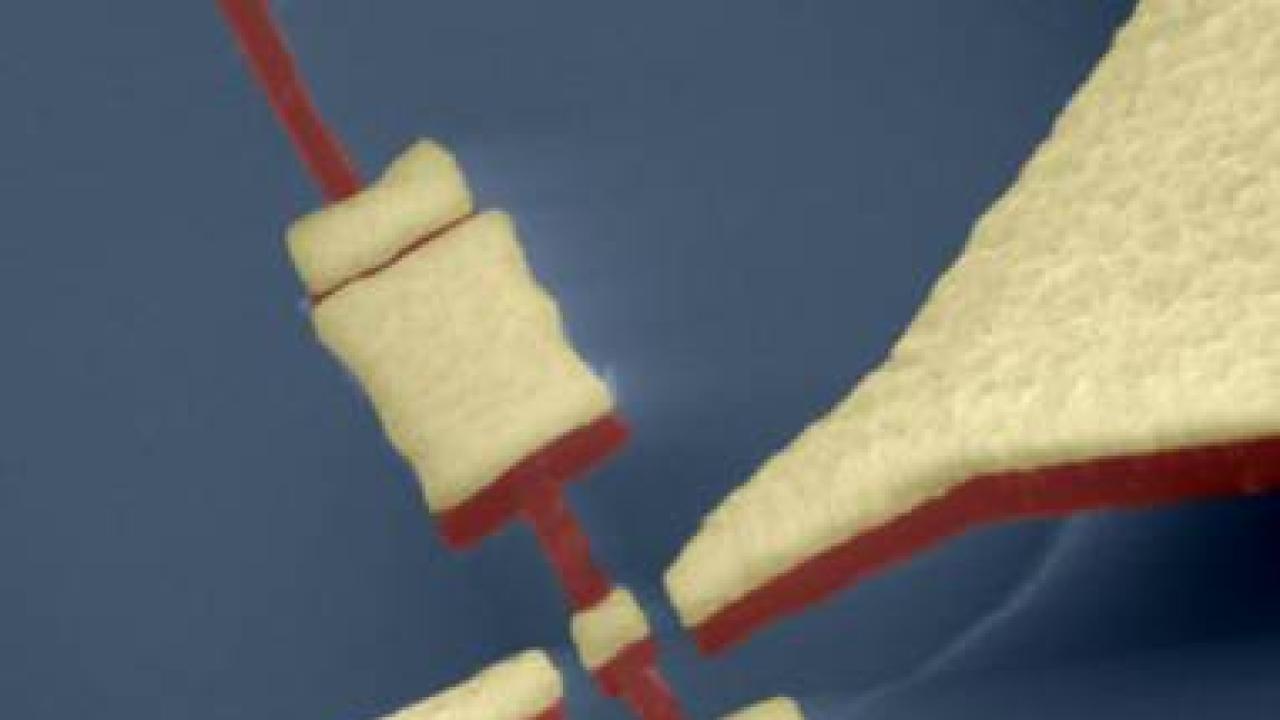
Although the Kondo effect--a phenomenon that arises from the interactions between a single magnetic atom and the many electrons in a non-magnetic, metallic host--was discovered in the 1930s and explained in the 1960s, it continues to be a subject of interest to condensed matter physicists, especially those studying matter at the nano scale. That is because it can help scientists to understand electronic transport through artificially created nano-objects, including semiconductor quantum dot transistors and molecular electronic devices.
When the Kondo effect is observed in a nano-device that is sandwiched between two large electron seas in two electric contacts (leads), the many-electron state arising due to a resonance scattering on the magnetic impurity is usually referred as a "Kondo cloud". Whether it is possible to measure and control a Kondo cloud is still under ongoing debate.
The ability to control a Kondo cloud in mechanical nano-devices would allow the possibility for a superhigh tunability of mechanical dissipation as well as supersensitive detection of mechanical displacement.
In order to find a resolution to the problem of Kondo cloud detection, ICTP scientist Mikhail Kiselev and an international team of researchers suggested an approach using nano-electromechanics.
Nano-electromechanics is a new and rapidly developing field of modern quantum transport condensed matter physics. It typically deals with devices that contain mechanical and electronic components that are strongly coupled to each other.
In a paper published online 5 February in Physical Review Letters and titled " Kondo Force in Shuttling Devices: Dynamical Probe for a Kondo Cloud", Kiselev and his colleagues from Chalmers University of Technology, University of Gothenburg and Tel-Aviv University reveal findings from a study of the Kondo force on a quantum dot attached to a vibrating cantilever, by which they can follow the inertia of a Kondo cloud.
"If this cloud exists, and if we start to move spin which is a quantum impurity, then the cloud will follow it with some retardation. Our paper addresses the question of how to calculate and measure this retardation effect and what kind of information we can get from this, both theoretically and experimentally," states Kiselev.
Kiselev adds that the research can have application in spintronics, molecular electronics, and be implemented in various types of nano-devices. "In particular, one of the application of nano-electromechanics is in metrology, allowing the measurement and detection of tiny electrical currents," he explains.
He adds that this idea of using dynamical probes to study Kondo clouds opens new possibilities for studying non-equilibrium phenomena which account for spin and combining non-equilibrium physics with the effects of strong correlations and resonance scattering.
Note: For a more detailed look at the subject, please refer to a book published by Springer, "Dynamical Symmetries for Nanostructures. Implicit Symmetries in Single-Electron Transport Through Real and Artificial Molecules" by Konstantin Kikoin, Mikhail Kiselev and Yshai Avishai. http://dx.doi.org/10.1007/978-3-211-99724-6
















